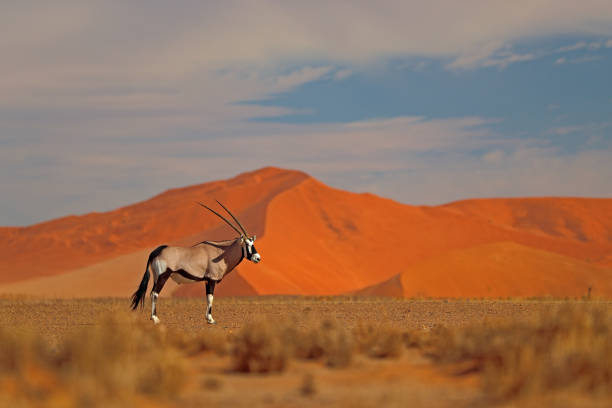The Remarkable Resurgence of the Arabian Oryx
Immerse yourself in an inspiring tale of survival and resilience as we explore the remarkable resurgence of the Arabian Oryx, driven to the brink of extinction just a few decades ago. This majestic desert antelope, once a mere whisper in the winds of the Arabian Peninsula, is now a beacon of hope for wildlife conservation.

The Arabian Oryx: A Glimpse into the Past
The Arabian Oryx, with its elegant horns and striking white coat, has been a symbol of beauty and endurance in the harsh desert landscapes for centuries. However, by the mid-20th century, excessive hunting and habitat loss had led to their alarming decline. By 1972, this noble creature was declared extinct in the wild, leaving a void in the ecosystem and a scar on our collective consciousness.
The Dawn of Conservation Efforts
In a bid to salvage this dire situation, a global consortium of zoos, researchers, and conservationists came together in an unprecedented collaboration. They initiated the ‘World Herd’ project, pooling together the remaining captive oryx from around the world. With meticulous breeding and management, they slowly increased the population, fostering hope for the species’ revival.
The Phoenix Rises: The Arabian Oryx’s Return to the Wild
Fast forward to today, and the Arabian Oryx is not just surviving—it’s thriving. The first reintroductions to the wild began in Oman in 1982. Since then, the reintroduction programs have expanded to other parts of the Arabian Peninsula, with current population estimates exceeding 1,000 individuals in the wild. This miraculous recovery led to the IUCN reclassifying the Arabian Oryx from ‘Extinct in the Wild’ to ‘Vulnerable’ in 2011, marking a historic victory for wildlife conservation.
The Economic Impact and the Way Forward
The resurgence of the Arabian Oryx has not just ecological implications but economic ones as well. They have become an emblem of national pride and a key tourist attraction, boosting the regional economy. Moreover, they play a vital role in maintaining the desert ecosystem, contributing to its overall health and resilience.
However, the Arabian Oryx’s journey is far from over. The species still faces threats from illegal hunting and habitat encroachment. Therefore, ongoing conservation efforts, stringent regulations, and public awareness are crucial to ensure the Arabian Oryx continues to flourish in its native sands.
Conclusion
The remarkable resurgence of the Arabian Oryx is a testament to the power of global collaboration and tireless conservation efforts. This majestic desert antelope’s journey from the brink of extinction to a beacon of hope serves as a powerful reminder of our responsibility towards our planet’s diverse inhabitants. As we continue to navigate the intricate dynamics of wildlife conservation, let the Arabian Oryx inspire us to persevere and safeguard our shared natural heritage.





